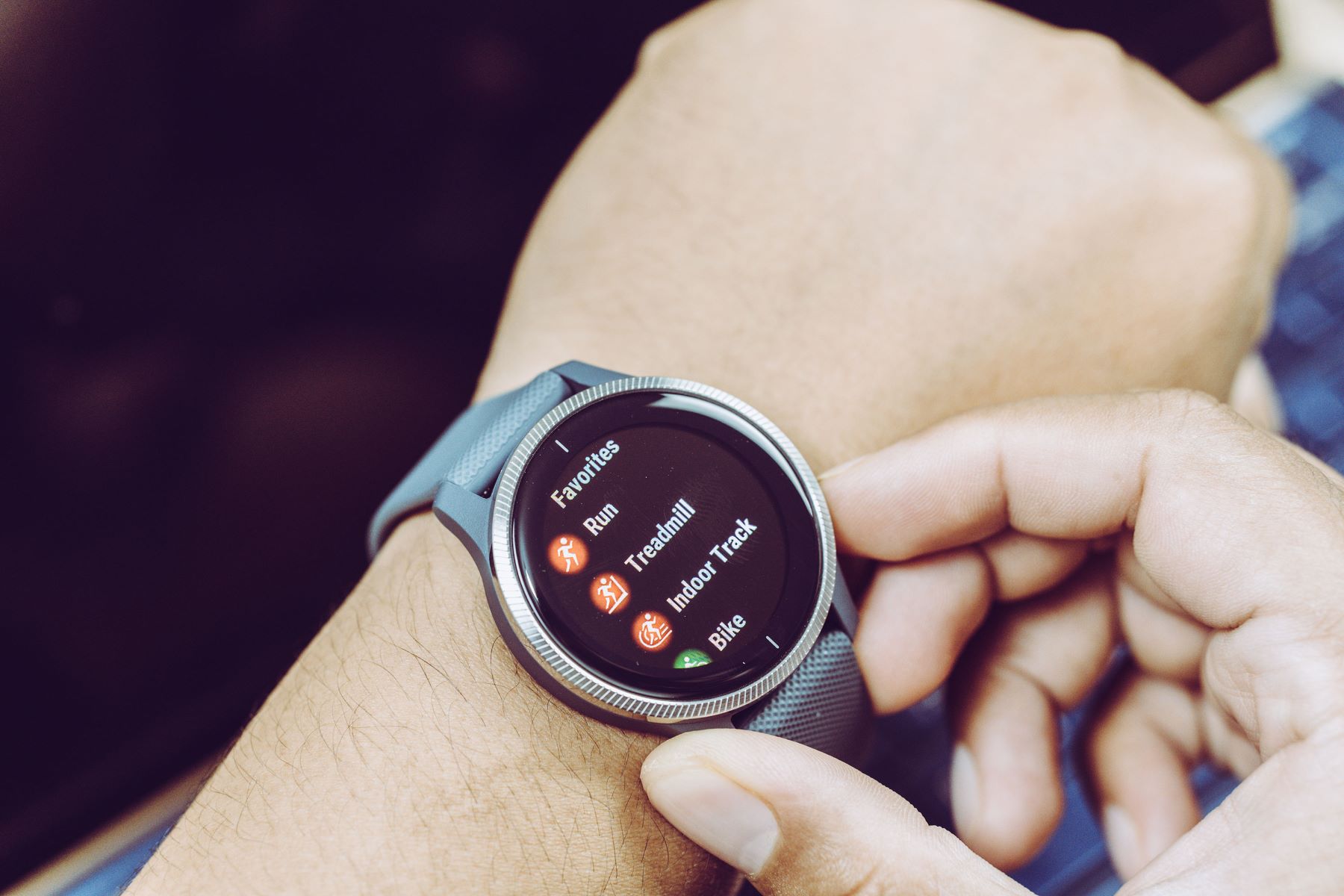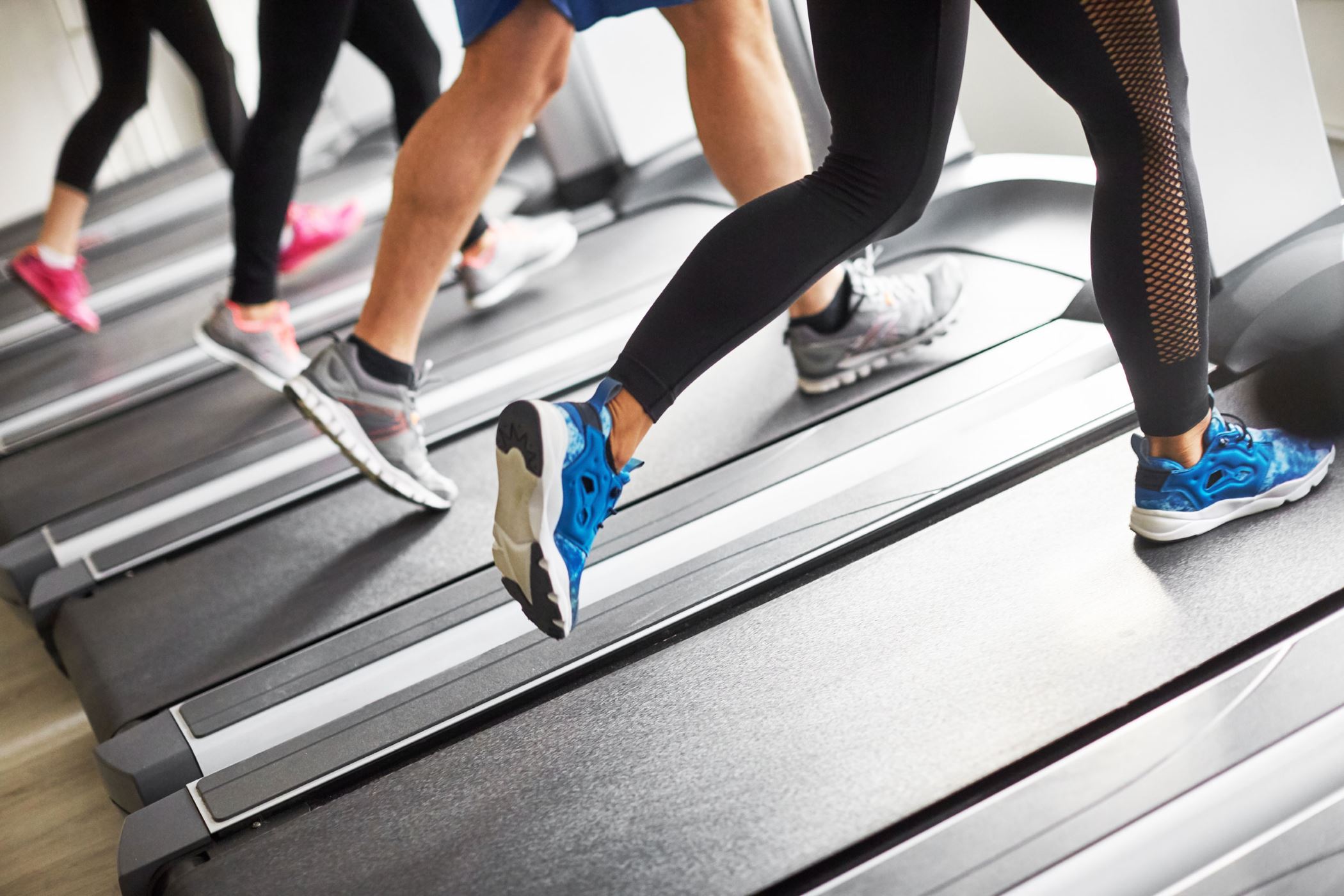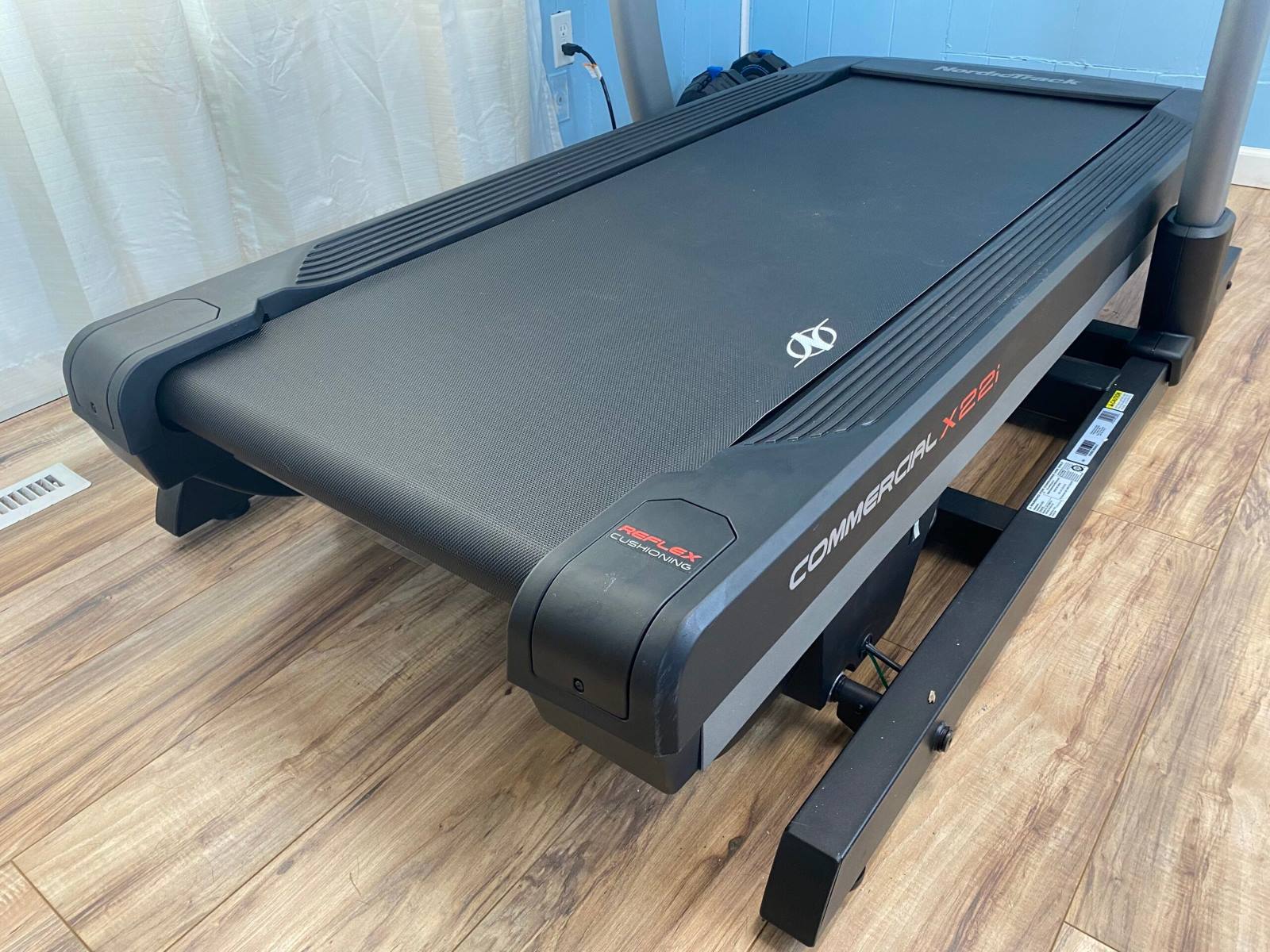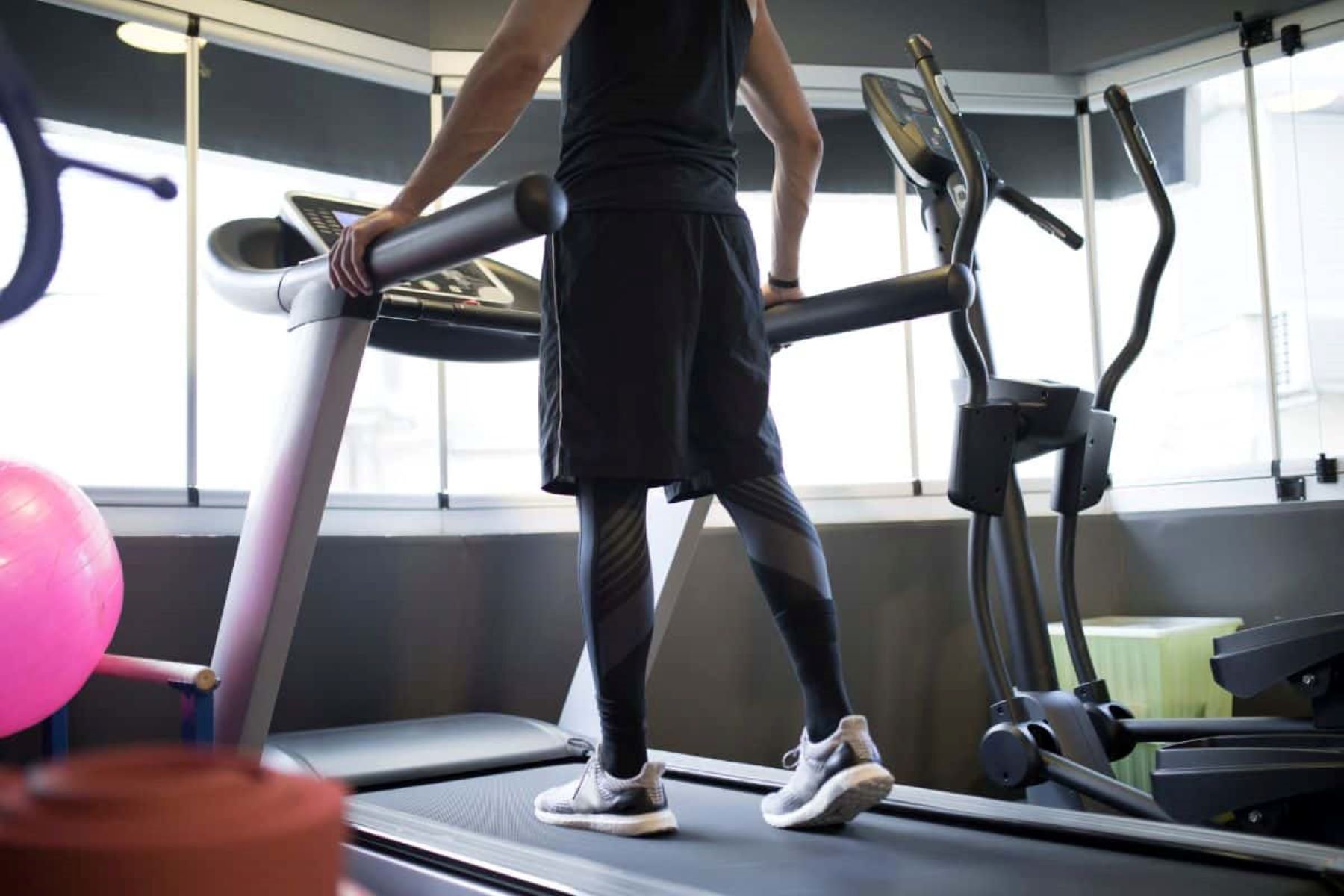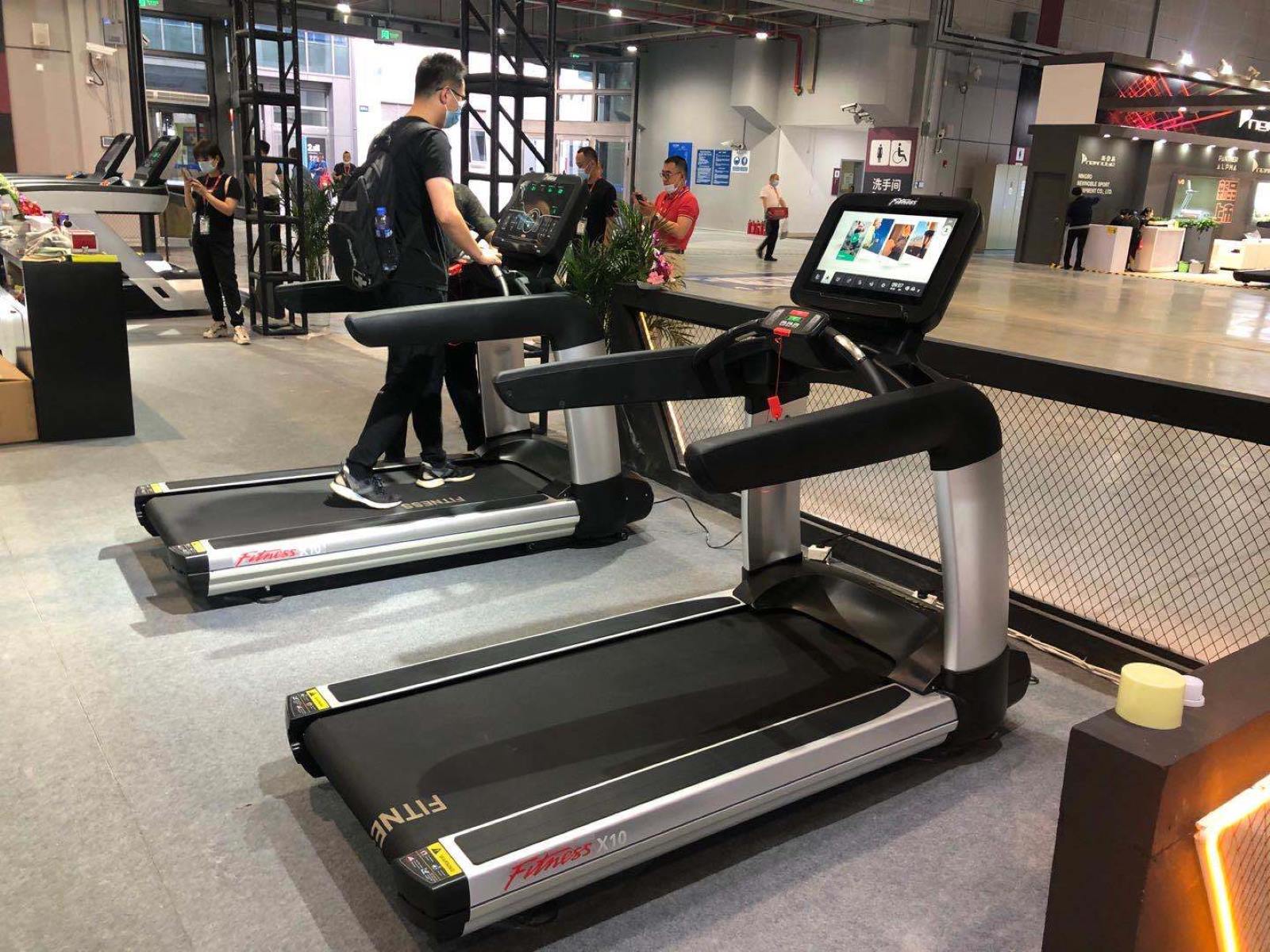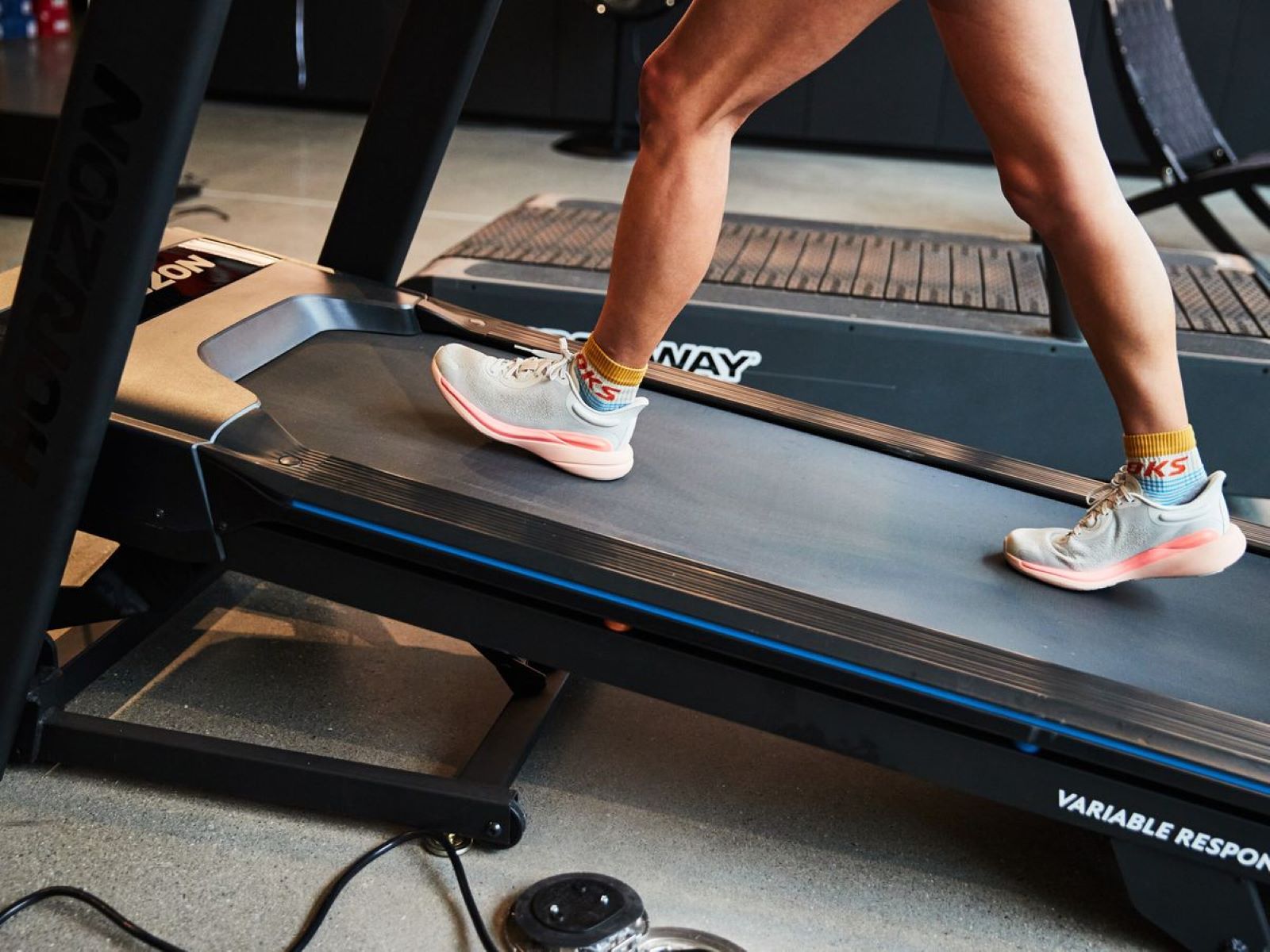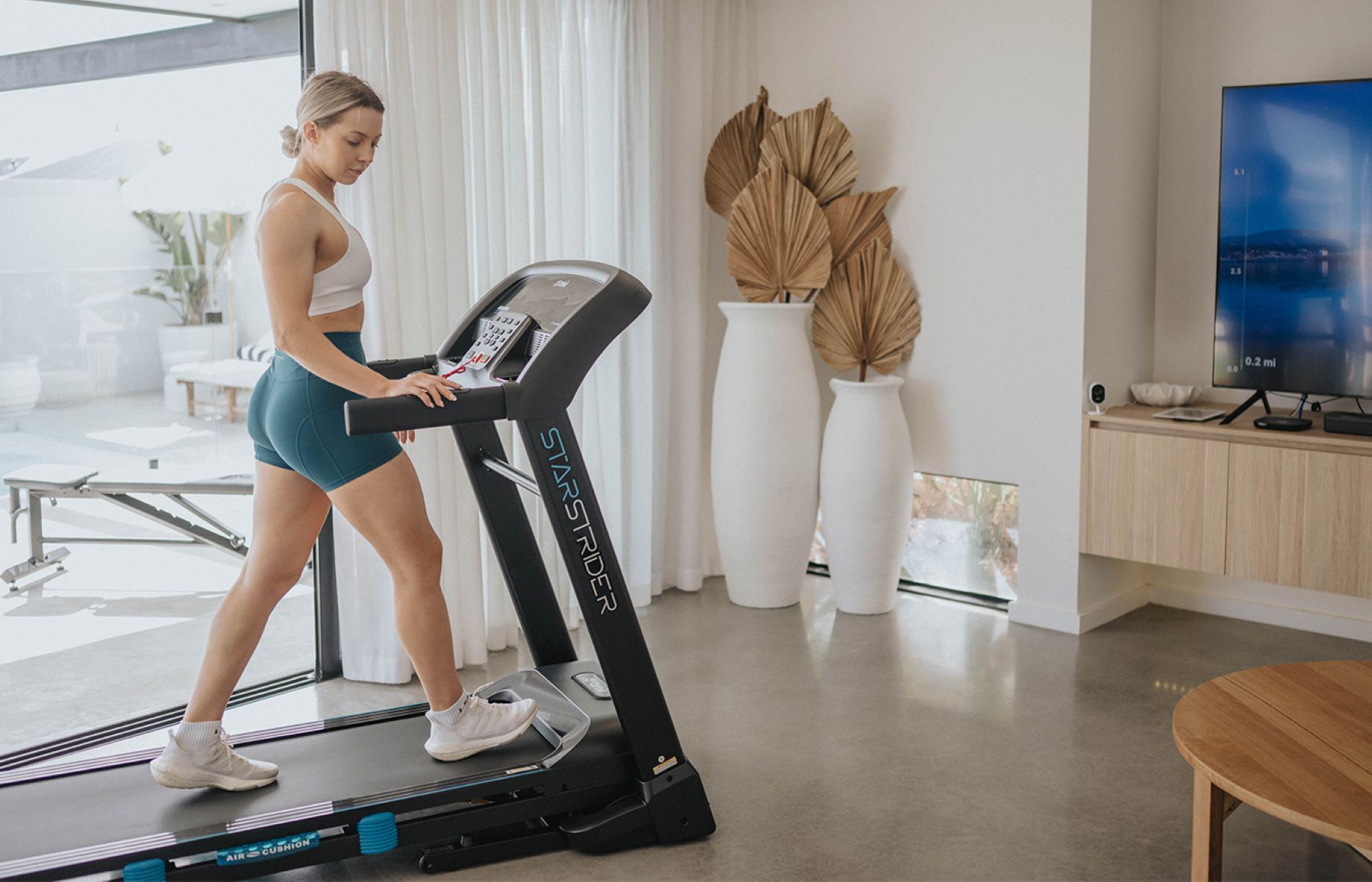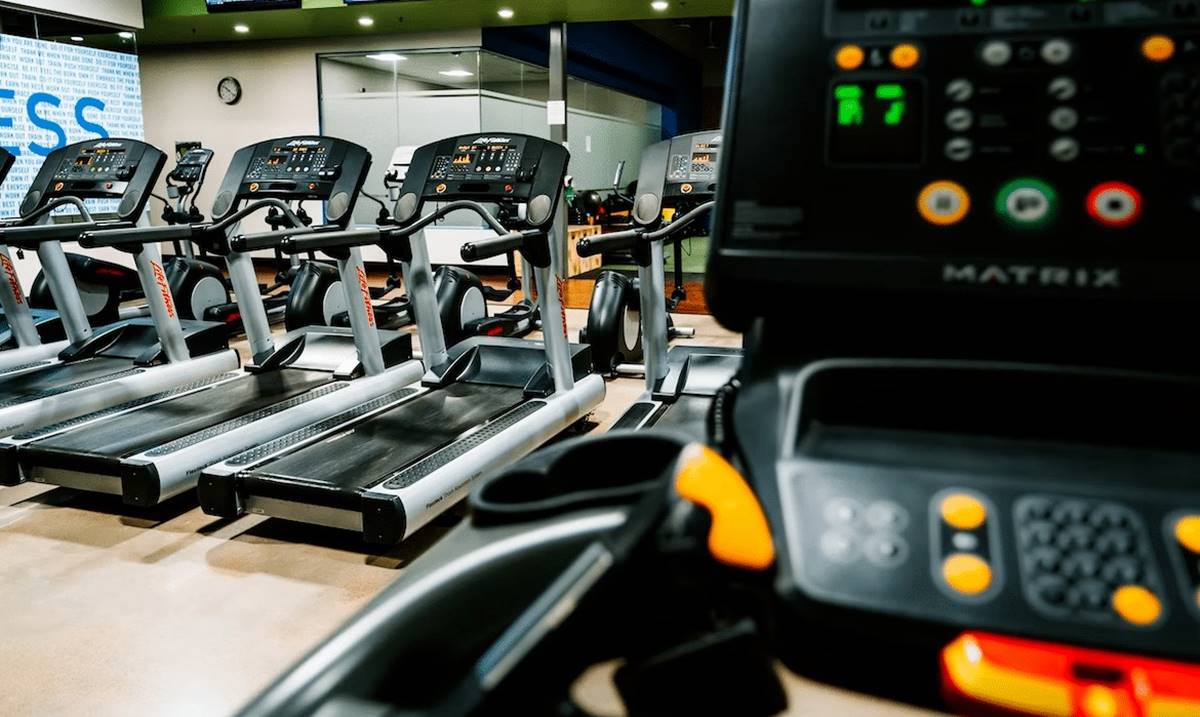

Featured
What Pace Is 7 On A Treadmill
Modified: January 22, 2024
Discover the ideal pace of running at 7 on a treadmill and achieve your fitness goals. Read about the featured tips to maximize your treadmill workout.
Introduction
When it comes to fitness and exercising, treadmills are a popular choice for both beginners and seasoned athletes. They provide a convenient and efficient way to burn calories and improve cardiovascular health. However, one common question that often arises is, what pace is “7” on a treadmill?
Understanding treadmill speeds is essential for setting appropriate goals and tracking progress during workouts. Treadmills typically have a digital display that indicates the speed in miles per hour (mph) or kilometers per hour (km/h). While these numerical values may seem straightforward, they can be subjective depending on factors such as fitness level, running experience, and personal preferences.
In this article, we will explore what exactly “7” on a treadmill means and how it relates to different fitness levels. We will also delve into factors that can influence the perception of speed on a treadmill and provide some helpful tips for running at various speeds.
By gaining a better understanding of treadmill speeds, you will be equipped to make the most out of your workouts and achieve your fitness goals more effectively.
Understanding Treadmill Speeds
Before we dive into deciphering what “7” on a treadmill means, let’s take a moment to understand how treadmill speeds are defined and measured. Treadmills typically allow users to adjust the speed, allowing for a wide range of workout intensities.
Treadmill speeds are commonly measured in miles per hour (mph) or kilometers per hour (km/h). The speed setting determines how fast the treadmill belt moves, which in turn affects the pace at which you run or walk on the machine. Most treadmills have buttons or controls that allow you to easily increase or decrease the speed as desired.
It’s important to keep in mind that treadmill speeds may differ slightly between different brands and models. While some treadmills may have a maximum speed of 10 mph, others may go up to 12 or even 15 mph. Make sure to consult the user manual or contact the manufacturer of your specific treadmill to understand the exact speed range.
Additionally, it’s worth noting that some treadmills provide the option to switch between metric and imperial units, allowing users to view the speed in either kilometers per hour or miles per hour, depending on their preference.
When using a treadmill in a gym or fitness center, you will often find that the speed is labeled in numerical increments. These increments can vary, but it’s common for treadmills to have a range from 1 to 10 or 1 to 15, depending on the model.
Now that we have a basic understanding of how treadmill speeds are measured and labeled, let’s delve into what the specific speed setting of “7” means on a treadmill, and how it relates to your workout intensity.
Defining Speeds on a Treadmill
When it comes to understanding speeds on a treadmill, it’s important to keep in mind that the perception of speed can vary from person to person. What may feel like a challenging pace for one individual may be a comfortable jog for another. Additionally, factors such as fitness level, running experience, and personal preferences can influence how speeds are interpreted.
To provide some context, let’s discuss the general guidelines for treadmill speeds:
- Walking: Typically, walking speeds range from 2 to 4 mph. This is a comfortable pace for most individuals and is suitable for low-intensity cardio workouts or warm-up exercises.
- Jogging: Jogging speeds typically range from 4 to 6 mph. This pace is faster than walking and requires more effort, making it suitable for moderate-intensity cardio workouts.
- Running: Running speeds generally start at around 6 mph and can go up to 12 or more mph, depending on individual capabilities and training goals. Running is a high-intensity exercise that burns more calories and improves cardiovascular fitness.
Based on these general guidelines, we can deduce that a speed of “7” on a treadmill falls within the running category. It’s important to note that this is a relative interpretation and may not be the same for everyone. Some individuals may find “7” to be a challenging sprint, while others may consider it a comfortable running pace.
When setting your treadmill speed, listen to your body and adjust it to a level that feels challenging yet sustainable. It’s always better to start at a lower speed and gradually increase as you build your stamina and fitness levels.
Now that we have a better grasp on the general definitions of treadmill speeds, let’s take a closer look at what “7” on a treadmill specifically indicates and how it can be perceived by different individuals during a workout.
What Does “7” on a Treadmill Mean?
When you see the number “7” displayed on a treadmill, it indicates a specific speed setting. However, it’s important to remember that the perception of speed can vary depending on factors such as fitness level, running experience, and individual preferences.
In general, a speed of “7” on a treadmill is considered a moderately fast running pace. It falls within the mid-range of running speeds and is often challenging enough to provide a good cardiovascular workout. This pace is typically faster than a comfortable jog but not quite sprinting.
For individuals with average running abilities and fitness levels, a speed of “7” on a treadmill can be a great choice for a high-intensity interval training (HIIT) workout. It pushes the limits of endurance and helps improve speed, stamina, and overall cardiovascular fitness.
However, it’s worth mentioning that the perception of speed can be subjective. Some individuals may find a speed of “7” to be too fast, while others may find it to be more of a moderate pace. It’s essential to listen to your body and adjust the speed to a level that challenges you without causing excessive strain or discomfort.
If you’re unsure about how “7” on a treadmill will feel for you, it’s always a good idea to start at a slower pace and gradually increase it until you find a speed that suits your fitness goals and abilities.
Remember, the primary goal is to find a speed that allows you to maintain good form and breath comfortably while still pushing yourself to a challenging level.
Now that we have a better understanding of what “7” on a treadmill means, let’s explore some factors that can influence the perception of speed during a treadmill workout.
Factors Affecting Treadmill Speed Perception
The perception of speed on a treadmill can vary from person to person due to several factors. Understanding these factors can help you better interpret and adapt your treadmill workouts:
- Fitness Level: Your current fitness level plays a significant role in how you perceive treadmill speeds. Someone who is relatively new to running or has a lower fitness level may find a speed of “7” on a treadmill to be more challenging, while a seasoned runner may see it as a moderate pace.
- Running Experience: The amount of running experience you have accumulated can affect your perception of speed. Regular runners who have logged many miles may find a speed of “7” to be comfortable, while occasional runners or beginners may feel it is more intense.
- Body Size and Composition: Your body size and composition can impact how you perceive treadmill speeds. Individuals with a larger body size or more muscle mass may find that they need to increase the speed to feel the same level of effort as someone with a smaller body size or less muscle mass.
- Running Surface: The type and condition of the running surface can influence your perception of speed. Treadmills with a cushioned surface can feel easier to run on compared to outdoor running, where you have to contend with uneven terrain, wind resistance, and other external factors.
- Environmental Factors: Other environmental factors, such as temperature and humidity, can affect how you perceive speed. For example, running in a cool and well-ventilated room may make a speed of “7” feel more manageable compared to running in a hot and stuffy environment.
- Personal Preferences: Finally, personal preferences also play a role in how you perceive treadmill speeds. Some individuals naturally prefer a slower and more controlled pace, while others thrive on faster and more intense workouts. It’s important to listen to your body and choose a speed that aligns with your preferences and goals.
By considering these factors, you can better understand why the perception of speed can vary and adjust your treadmill workouts accordingly. Remember that the most important aspect is finding a speed that challenges you while still allowing you to maintain proper form and breathe comfortably.
Now that we’ve explored the factors that can influence the perception of speed on a treadmill, let’s move on to some tips for running at various treadmill speeds.
Tips for Running at Various Treadmill Speeds
Running on a treadmill at different speeds can add variety and challenge to your workouts. Whether you’re aiming for a brisk walk, a jogging pace, or a faster run, here are some tips to help you make the most of your treadmill sessions:
- Warm Up: Before increasing the speed, always start with a warm-up. Begin with a slow walk or light jog for 5-10 minutes to prepare your muscles and prevent injuries.
- Gradual Progression: When increasing the speed, make sure to do it gradually. Jumping from a slower pace to a much faster one abruptly can be jarring for your body. Increase the speed by small increments to allow your body to adjust and adapt to the changes.
- Maintain Good Form: Focus on maintaining proper running form regardless of the treadmill speed. Keep your head up, shoulders relaxed, and core engaged. Avoid hunching over or leaning too far forward, as this can lead to improper alignment and increase the risk of injury.
- Use Interval Training: Interval training is an effective way to improve speed and endurance. Alternate between periods of faster running and slower recovery periods. For example, you can run at a higher speed for 1-2 minutes, followed by a lower-speed recovery period for the same duration. Repeat this cycle for a specific number of repetitions or a set duration of time.
- Listen to Your Body: Pay attention to how your body feels at different speeds. If you find a certain speed to be too challenging or uncomfortable, don’t hesitate to decrease it. It’s essential to find a balance between pushing yourself and avoiding overexertion or injury.
- Stay Hydrated: Remember to hydrate adequately before, during, and after your treadmill workouts. Even though you may not feel as thirsty during indoor workouts compared to outdoor runs, staying hydrated is crucial for optimal performance.
- Adjust Incline: Don’t forget about the incline feature on your treadmill. Increasing the incline can help simulate outdoor running conditions and engage different muscle groups. It adds an extra challenge to your workouts and can improve strength and endurance.
- Vary the Speed: It’s beneficial to incorporate different speeds in your treadmill workouts to challenge your body in different ways. Mix up your routines with slow, moderate, and fast-paced runs to target different energy systems and improve overall performance.
- Cool Down: After your treadmill run, don’t forget to cool down properly. Gradually decrease the speed and finish with a few minutes of walking or gentle stretching to allow your heart rate to return to normal and prevent muscle soreness.
Remember, every individual is unique, and what works for one person may not work for another. Experiment with different speeds and find what feels comfortable and challenging for you. It’s always a good idea to consult with a fitness professional or a coach if you need personalized advice or guidance.
Now that we’ve covered some helpful tips for running at various treadmill speeds, let’s summarize the key points we’ve discussed so far.
Conclusion
Treadmills are versatile fitness equipment that provide the opportunity to engage in various levels of running or walking workouts. Understanding treadmill speeds and their significance is key to tailoring your workouts to your fitness level and goals.
In this article, we have explored the meaning of “7” on a treadmill and how it relates to different fitness levels. We’ve learned that a speed of “7” is generally considered a moderately fast running pace, although the perception may vary from person to person.
We have discussed the factors that can affect the perception of speed on a treadmill, including fitness level, running experience, body size and composition, running surface, environmental factors, and personal preferences. Being aware of these factors can help you better interpret and adapt your treadmill workouts to suit your needs.
Additionally, we have provided tips for running at various treadmill speeds, such as warming up properly, gradually increasing speed, maintaining good form, incorporating interval training, listening to your body, staying hydrated, adjusting the incline, varying the speed, and cooling down effectively.
Remember, the most important aspect of running on a treadmill is finding a speed that challenges you while still allowing you to maintain proper form and breathe comfortably. Adapt your workouts based on your fitness level, listen to your body, and make modifications as needed.
So, whether you’re aiming for a leisurely stroll, a moderate jog, or a faster run, the treadmill offers a versatile platform to help you achieve your fitness goals. Use the information and tips provided in this article to make the most of your treadmill workouts and enjoy the benefits of improved cardiovascular health and increased endurance.
Now, lace up your running shoes, hop on that treadmill, and let the speed dial guide you towards achieving your fitness milestones!

